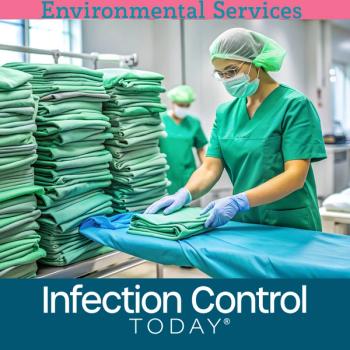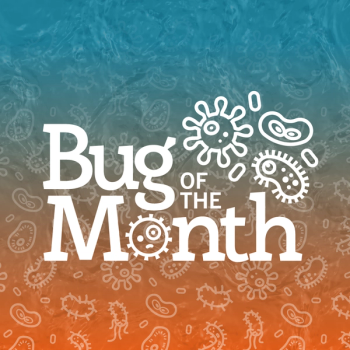
Unveiling Malaria: Parasitic Complexity, Climate Impact, and Vaccination Advancements
Dive into the intricate world of malaria, from parasite complexities to climate change, and the latest in vaccination, vital knowledge for health care workers.
For the month of February 2024, Infection Control Today® and
“Parasites are as complex; you can think of them as being as complex as a human cell. Because they code for 1000s of proteins, as opposed to viruses, which only have a minimal genome, they make only a handful of proteins,” Prakash Srinivasan, PhD, assistant professor, Johns Hopkins Malaria Research Institute said. “So, parasites are a lot more complex than viruses, and the reason why it becomes such a big challenge to develop vaccines against parasites, such as the malaria parasite plasmodium.”
Climate Change's Impact on Malaria
Malaria remains a burden in sub-Saharan Africa, further exacerbated by climate change. Fluctuations in temperature and precipitation influence the disease's vectors and incidence rates (IR). A study in BioMed Central outlines how average temperature changes affect malaria incidence rates in 9 sub-Saharan countries, noting a 20–80% decrease from 2000 to 2018. Malaria remains a significant public health concern in sub-Saharan Africa despite a marked decline in incidence rates observed in most of the countries studied.2
This study aligns with recent findings, showing a 20 to 80% decrease in malaria IR from 2000 to 2018. However, there's significant variability in IR, with high rates in Uganda, Mozambique, Nigeria, and Zambia; moderate rates in Ghana, Zimbabwe, and Kenya; and low rates in South Africa and Ethiopia in 2018. It highlights how IR varies with average temperature changes in some countries and points out an inverse temperature-IR relationship, especially during periods of IR decrease in Ghana and Nigeria that matched with temperature increases. These decreasing IR trends, affected by temperature fluctuations, are likely shaped by intervention efforts and rainfall changes. Yet, the threat of vulnerability and changing climate may challenge further reductions in malaria IR.
“Malaria represents an emblematic example of how climate change can directly influence human health, facilitating the spread of infectious diseases previously confined to well-defined geographical areas,” said Mariana Torres, MD, head of surveillance at BlueDot. “Responding to this challenge requires a coordinated approach that includes environmental monitoring, vector control, research and development of new diagnostic and therapeutic tools, and public information and awareness campaigns.”
Symptoms, Prevention, and Recent Advancements
The CDC monitors malaria as it becomes more prevalent in the US, emphasizing the risk of severe health issues and fatalities if untreated. In 2020, there were 241 million global instances and 627,000 deaths, mostly among young children in sub-Saharan Africa.
Symptoms of malaria typically emerge 10 to 15 days after a bite from an infected mosquito, and early testing is crucial due to the potential for some malaria strains to lead to serious health complications or death. High-risk groups include infants, children under 5, pregnant women, travelers, and individuals with HIV or AIDS. Critical symptoms encompass severe fatigue, loss of consciousness, repeated seizures, breathing difficulties, discolored or bloody urine, yellowing of the skin (jaundice), and unusual bleeding. Immediate medical attention is necessary for those experiencing severe symptoms. Malaria in pregnant women can result in early delivery, stillbirth, or the birth of an underweight infant. Prevention strategies include mosquito bite avoidance and prophylactic medication, while treatments exist to prevent the progression of mild cases.2
Hernán Acosta, MD, internal medicine specialist and clinical lead at BlueDot, notes the importance of vector control and early diagnosis in endemic areas, highlighting challenges like insecticide resistance.
“While highly endemic areas focus on vector control as well, they implement insecticide-treated nets and indoor residual spraying as part of disease control and elimination strategies. However, the increase in insecticide resistance among the Anopheles mosquitoes requires urgent action to maintain and improve malaria control efforts,” Acosta said. “Early diagnosis and treatment and preventive chemotherapy are also part of the population-based strategy in endemic areas. The latter focuses on the use of antimalarial medication during pregnancy, infancy, and in children living in high-risk areas per WHO guidelines.”
The approval and deployment of RTS, S/AS01, and R21/Matrix-M vaccines represent a milestone in malaria control, potentially saving about 450,000 lives a year. With 80 million children eligible for vaccination in sub-Saharan Africa, doses are highly needed. The availability of these vaccines offers at-risk children protection against malaria.
Treatment
The World Health Organization (WHO) has approved 2 vaccines, RTS, S (Mosquirix) and R21/Matrix-M, marking significant progress in malaria control. These vaccines promise to reduce the disease's impact, with the R21/Matrix-M vaccine demonstrating up to 75% efficacy.
A phase 3 trial published in The Lancet for the R21/Matrix-M vaccine, involving 4,800 children in Burkina Faso, Kenya, Mali, and Tanzania, demonstrated that the vaccine was safely tolerated and had a positive safety profile. Over 12 months, the vaccine showed an efficacy rate of 75% in regions with high seasonal malaria transmission and 68% in areas with perennial transmission. It was also observed that administering a booster dose significantly improved its effectiveness, maintaining a 74% efficacy rate over 18 months in seasonal transmission areas.3
“Demand for the RTS, S vaccine far exceeds supply, so this second vaccine is a vital additional tool to protect more children faster and to bring us closer to our vision of a malaria-free future," said WHO Director-General Tedros Adhanom Ghebreyesus in a statement.5
Based on data from an ongoing clinical trial and other studies, the R21 vaccine has been shown to have a high degree of efficacy when administered just before the high transmission season, with data showing a 75% reduction in malaria cases in the 12 months following the 3-dose series. A fourth booster dose administered 1 year later helped maintain efficacy.5
Travelers and Malaria in the US
Travelers to malaria-endemic regions face varied risks, necessitating personalized prevention strategies. Despite the approximately 2000 annual US cases of travelers' malaria, local transmission remains rare, thanks to environmental conditions and mosquito behaviors.4
Malaria in the US is primarily associated with travelers' malaria. This includes people visiting from malaria-endemic countries or US residents who travel to countries with ongoing transmission. Upon their return, they may already be infected, bringing the parasites back with them and starting to show symptoms, according to Prakash Srinivasan, PhD." “So that's what is called travelers malaria. And usually, there are about 2000 cases of travelers malaria every year in the US. But this year, after almost 2 decades, of no local transmission of malaria.”
Progress and Challenges Ahead
Efforts to combat malaria through improved understanding, prevention, and treatment are making headway, with vaccines offering a new tool for reducing its impact. However, continued efforts in mosquito control, public health education, and international cooperation are essential. The fight against malaria exemplifies the importance of research, innovative solutions, and global collaboration in addressing infectious diseases.
The development of vaccines represents significant progress in combating malaria. Climate change alters malaria's spread, requiring adaptable public health strategies. The battle against malaria emphasizes the need for continued research, international collaboration, and innovative solutions to mitigate the threat of malaria. Combining scientific developments with prevention strategies is essential for reducing and potentially eradicating the impact of malaria.
References
- Malaria. WHO | Regional Office for Africa. Accessed February 21, 2024.
https://www.afro.who.int/health-topics/malaria - Leal Filho W, May J, May M, Nagy GJ. Climate change and Malaria: Some Recent Trends of Malaria Incidence Rates and Average Annual Temperature in Selected Sub-Saharan African Countries from 2000 to 2018. Malaria Journal. Published August 28, 2023. Accessed February 21, 2024. doi:10.1186/s12936-023-04682-4
- Datoo M, Dicko A, Tinto H, Ouédraogo J, Hamaluba M, et. al. Safety and Efficacy of Malaria Vaccine Candidate R21/Matrix-M in African children: a Multicentre, Double-Blind, Randomised, Phase 3 Trial. Published February 1, 2024. Accessed February 21, 2024. doi:
https://doi.org/10.1016/S0140-6736(23)02511-4 - Prevention CC for DC and. Cdc - Malaria - Diagnosis & Treatment (United States) - treatment (US) - Guidelines for Clinicians (Part 1). Published June 28, 2023. Accessed February 21, 2024.
https://www.cdc.gov/malaria/diagnosis_treatment/clinicians1.html - Bigicia, A. New Malaria Vaccine Endorsed by WHO Could Help Resolve Supply Issues. Contagion. Published October 6, 2023. Accessed February 21, 2024.
https://www.contagionlive.com/view/new-malaria-vaccine-r21-matrixm-endorsed-by-who-could-help-resolve-supply-issues - Parkinson, J. The CDC Sends Out Health Advisory on Locally Acquired Malaria Cases in Continental US. Contagion. Published June 27, 2023. Accessed February 21, 2024.
https://www.contagionlive.com/view/the-cdc-sends-out-health-advisory-on-locally-acquired-malaria-cases-in-continental-us
Newsletter
Stay prepared and protected with Infection Control Today's newsletter, delivering essential updates, best practices, and expert insights for infection preventionists.





